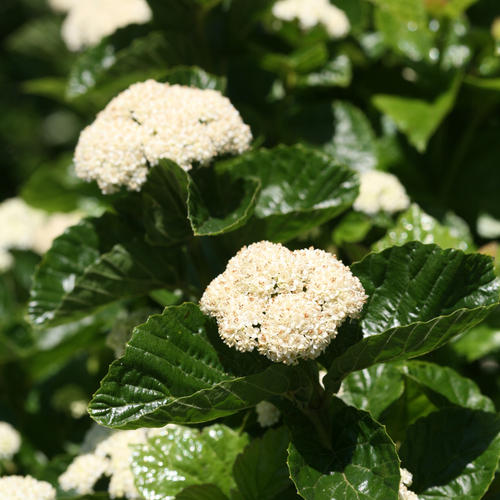The Uses Of Arrowwood Viburnum
Arrowwood Viburnum has a rich history that extends many centuries before botanists formally recorded its existence. The first groups to acknowledge it's usefulness were indigenous tribes across North America, which used it extensively for practical applications and healing purposes. The hardy shrub played a vital role in their existence by being featured in folklore and daily rituals. Indigenous tribes tracked the plant's seasonal transformations and used its durable branches to create tools while honoring its capacity to survive in different weather conditions. European settlers observed the plant’s multiple uses soon after their arrival and started incorporating it into their own cultural practices. The current name of this plant appeared in botanical literature during the 18th century when explorers documented New World biodiversity. The plant achieved widespread recognition beyond indigenous use which resulted in its adoption into garden design and conservation practices as well as its application in medicinal contexts.
Arrowwood Viburnum Traditional and Modern Medicinal Uses
Native American tribes have known about this shrub's medicinal uses for centuries through their use of its bark leaves and berries in treating different ailments. The bark served as a base for teas that helped reduce fevers and infections, while crushed leaves made poultices that treated small wounds and insect bites. The shrub's astringent properties allowed people to treat gastrointestinal conditions like diarrhea and indigestion. Herbalists and early medical practitioners researched its potential benefits over time but it never entered mainstream pharmaceutical use although it continues to be valued in folk medicine. Today certain herbalists still appreciate this plant because it provides mild analgesic and anti-inflammatory benefits that help relieve muscle pain and cramps. Its historical usage stands as proof of its practical benefits even though scientific research continues to explore its complete medicinal potential.
Early Discovery and Botanical Documentation
European botanists officially documented the plant in the mid-1700s after it had been utilized by indigenous peoples for several centuries. Explorers investigating North America dedicated themselves to documenting new plant species while marveling at the extensive flora that differed from European varieties. Botanical records from the past indicate that it demonstrates robust growth and adaptability across multiple soil types and moisture levels. The discovery of this plant was crucial because it became an important ornamental and functional element for cultivated landscapes. During the 19th century, formal gardens and parks across both North America and Europe started using this species in their designs. The widespread distribution of it to nurseries for commercial propagation established its enduring role in horticulture. The shrub continues to be cherished as a native plant because of its stunning appearance, toughness and environmental advantages.

Arrowwood Viburnum A Staple in Landscaping and Design
The species has consistently served as an essential element of both wild environments and human-designed landscapes. Due to its robust nature and minimal maintenance requirements along with its ability to thrive in various soil types gardeners frequently choose this plant. The dense arching branches of this plant make it perfect for hedges and natural boundaries while its seasonal changes bring visual interest to any landscape. The plant commonly appears along suburban and urban roadways and in parks because it acts as both wind protection and erosion control. Rain gardens and wetland restoration projects benefit from its capacity to thrive under different moisture conditions. This plant functions well as both a singular feature and as a component of mixed shrub borders to increase garden beauty while supporting local wildlife with shelter and food resources. The versatility of this plant appeals to both homeowners and landscape designers, and it helps maintain its use in modern and classic garden designs.
Distinctive Beauty Through the Seasons
Arrowwood Viburnum stands out in any environment because of its appealing visual attributes. The spring season brings forth creamy white floral clusters which take shape into delicate rounded panicles that stand out against the backdrop of deep green leaves. The flowers serve to enhance the garden's aesthetic while drawing in different types of pollinating insects. Throughout summer the glossy serrated leaves stay vibrant while serving as a lush backdrop for the developing blue-black berries that mature in early autumn. As fall sets in the foliage changes dramatically into deep reds, oranges and burgundy shades. The plant's seasonal transformations create an eye-catching feature suitable for any landscape setting. The shrub remains visible during winter through its detailed branch design which provides gentle visual interest against the bare winter landscape. The plant maintains its ornamental value because of its successful adaptation to different environmental conditions.
Arrowwood Viburnum A Magnet for Rare and Beneficial Wildlife
Arrowwood Viburnum's value extends beyond its aesthetics because it supports a wide range of wildlife species. Native pollinators such as bees and butterflies depend on the early-season blooms of this plant because its flowers provide an abundant supply of rich nectar necessary to support their populations. Late summer produces berries it which continue through fall to serve as critical food sources for diverse bird species such as cedar waxwings, thrushes and vireos. During bird migration periods these fruits supply vital high-energy nutrition which supports birds through their extensive travel. The dense branching structure acts as a protective shelter for nesting birds against predators and extreme weather. Small mammals derive benefits from its presence because they use its sturdy framework as a safe refuge. This species becomes vital for native plant conservation because its ecological contributions help maintain balanced and thriving biodiversity in its planting areas.
Arrowwood Viburnum demonstrates its worth through historical depth and medicinal benefits while boasting an appealing look and offering support to wildlife. The continued existence of this plant in gardens, woodlands, and restoration projects clearly demonstrates its resilience and aesthetic appeal, which makes it deserve admiration.